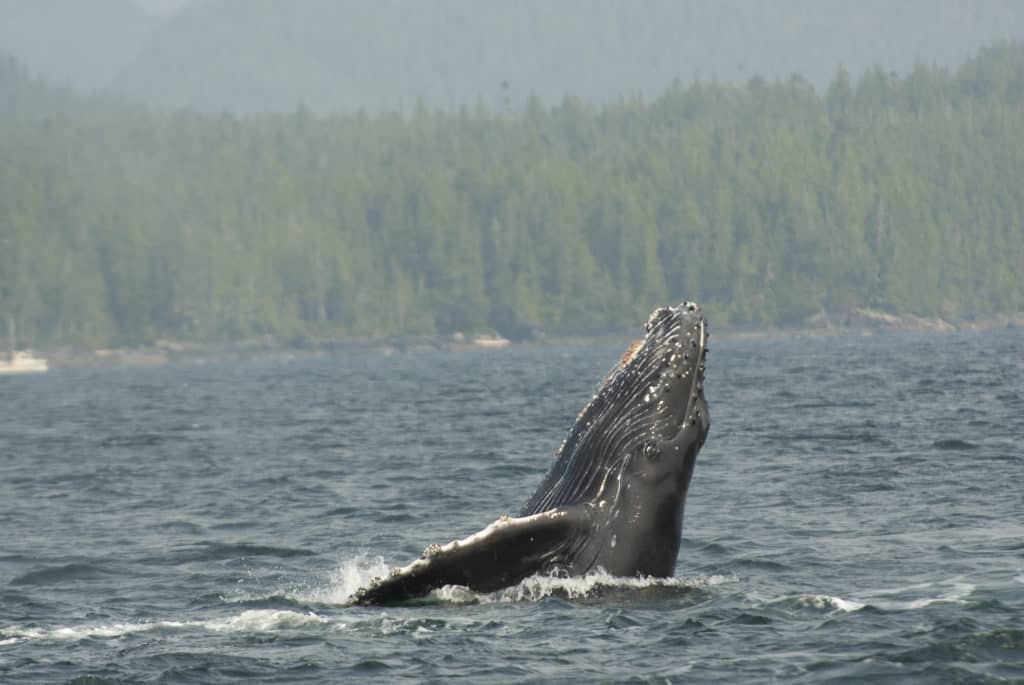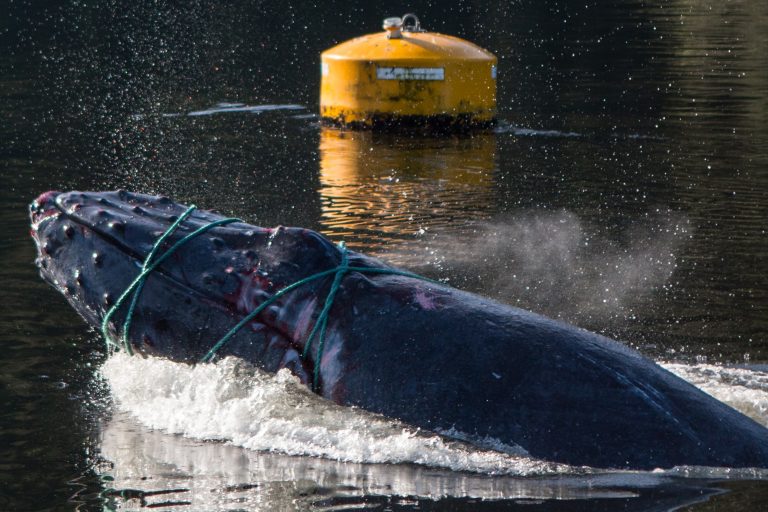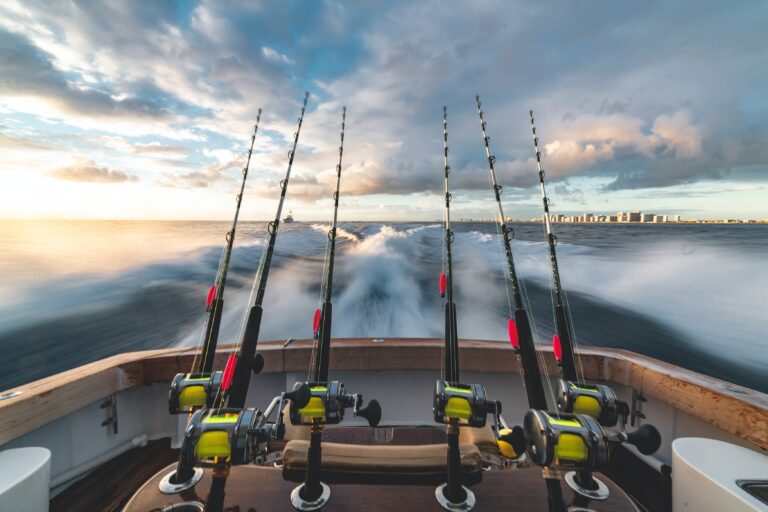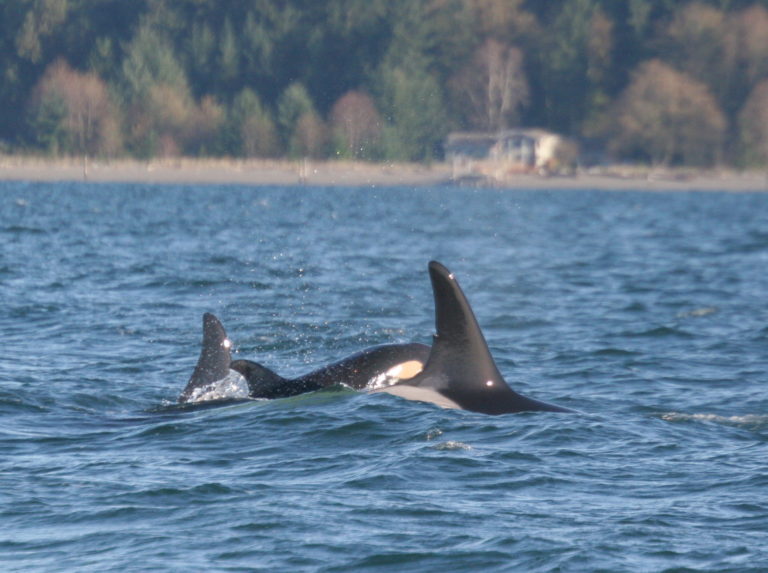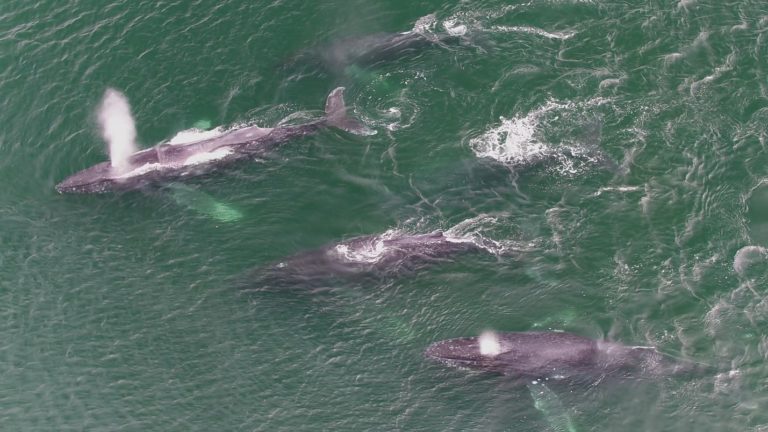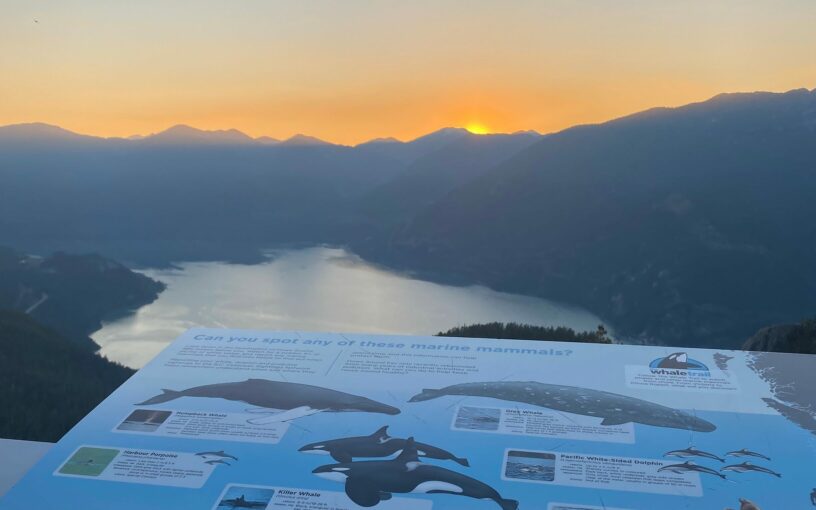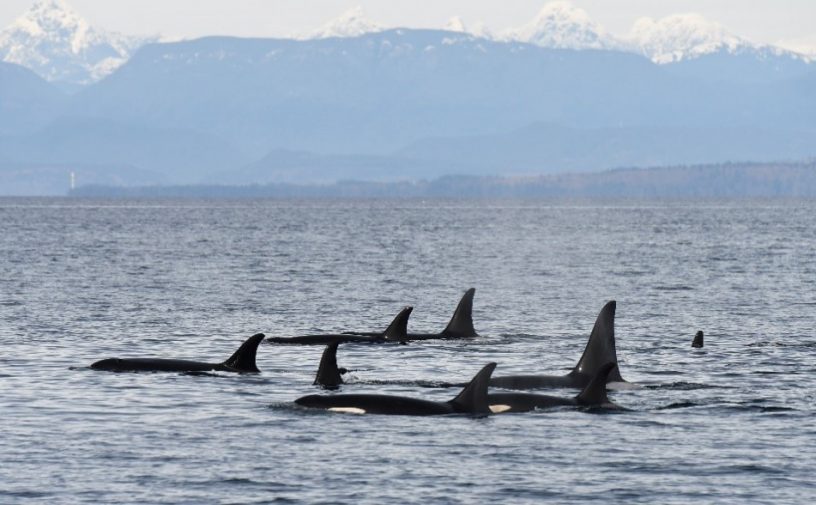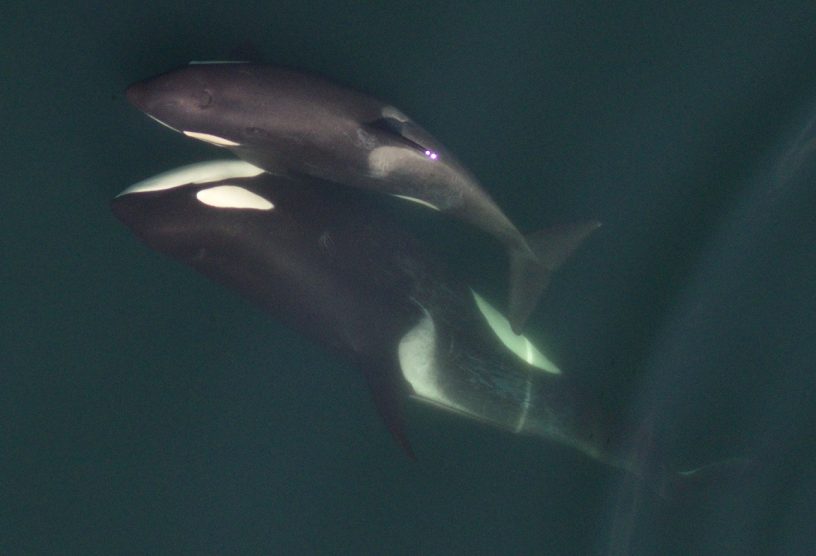Grey Whales: Meet this overlooked gentle giant
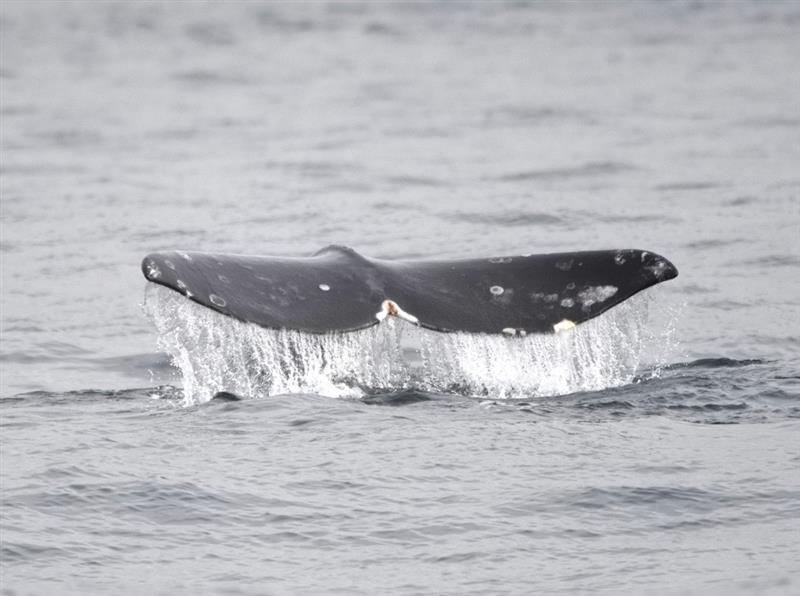
Summer is the perfect time to get out on the water, enjoy the weather, and explore the rich marine life of the Pacific Coast. If you are near the water this summer, the coastal waters you might just be lucky enough to spot a whale. While killer whales and humpback whales are commonly seen during the summer months in British Columbia and Washington State, there is another whale you may not be as familiar with, the grey whale. While often overlooked, these gentle giants are just as captivating and have their own story to tell.
Grey whales can be recognized by their mottled grey skin and bodies covered in barnacles and whale lice. Unlike humpback whales, grey whales lack a dorsal fin, their pectoral fins are significantly smaller, and they feed on the ocean floor in shallow near-shore areas eating crustaceans and small fish. There are two distinct populations of grey whales: the Western North Pacific population and the Eastern North Pacific population. The Western population is much smaller and migrates along the coast of Asia. The Eastern population resides on the Eastern side of the Pacific Ocean and is known for having one of the longest seasonal migrations of any animal, traveling up the coast from Mexico to Alaska and back every year. Within the Eastern population, there is also a smaller sub-population, known as the Pacific Coast Feeding Group, that skips the long journey north and hangs out along the coast of B.C. for the entire summer.

Grey whale surfacing off the West Coast of Vancouver Island. Photo Credit: Jessica Scott/Ocean Wise
While grey whales might be a less common sighting than humpback whales or killer whales, you may remember hearing about Little Patch, a grey whale that lingered for several weeks in Vancouver Harbour back in April. While this length of stay in the area was rare, grey whales are sighted in B.C. all year round. Sightings submitted to the Ocean Wise Sightings Network from 1971 to 2025 give us a better picture of when and where these whales are seen throughout the year. Grey whales are the most abundant in B.C. waters during the spring months while on route to the Arctic from the warm tropical waters of Mexico during their annual migration. During this time, the whales come close to shore foraging for their favourite foods.
Unfortunately, the grey whale population that feeds along the coast of B.C. has faced worrying declines in recent years. Several serious threats are a risk to the abundance and well-being of this species and cannot be ignored. Starvation was the main cause of the grey whale mortality event that occurred from 2019 to 2023 and resulted in a population decline of almost 6,000 individuals. Sightings show that grey whales forage throughout the year in B.C., but the crustaceans and small fish they feed on in the Arctic, resources that drive their migration, must provide enough energy to carry out their long, extraneous journey back. Due to climate change, ecosystem changes in their Arctic feeding areas have led to declines in food resources, resulting in decreased birth rates and increased mortality.
Ship strikes are also a huge driver of grey whale deaths. Large commercial boaters and container vessels injure and kill thousands of whales each year, making them one of the primary threats to their well-being. Climate change also increases the risk of ship strikes, as rising ocean temperatures push the whales closer to busy shipping lanes. The direct outcome of these threats has been evident as grey whales have frequently been found washed up on the shores of many beaches along the Pacific Coast. In B.C. in 2025, two grey whales were reported to have washed up on shore in Tofino and Haida Gwaii.

The services grey whales provide to both their ecosystems and humans alike are incredibly valuable. As a keystone species, they maintain the structure and diversity of several invertebrate populations. They also reduce the impacts of climate change through carbon sequestration and cycle nutrients throughout the ocean, supporting life from the ocean floor all the way to the surface. The benefits that these whales provide are abundant, but unfortunately due to looming threats, they are at risk. However, all hope is not lost as we all have the ability to help protect these incredible animals.
Whether you’re on the water or hanging out along the shore, keep an eye out for grey whales making their way along the coast. If you see a whale, report it in real-time to Ocean Wise through the Whale Report app. Your report helps support long-term monitoring and alerts commercial vessels, prompting them to slow down or alter course to reduce the risk of ship strikes.
If you’re out on the water – whether in a motorized vessel, kayak, or paddleboard – be mindful of the whales beneath the surface. Learn how to detect when a whale may be nearby and familiarize yourself with the Be Whale Wise Regulations and Guidelines to keep both you and the whales safe.
Written by Greta Romas, Ocean Wise Research Assistant
Posted August 20, 2025 by Rosemary Newton
